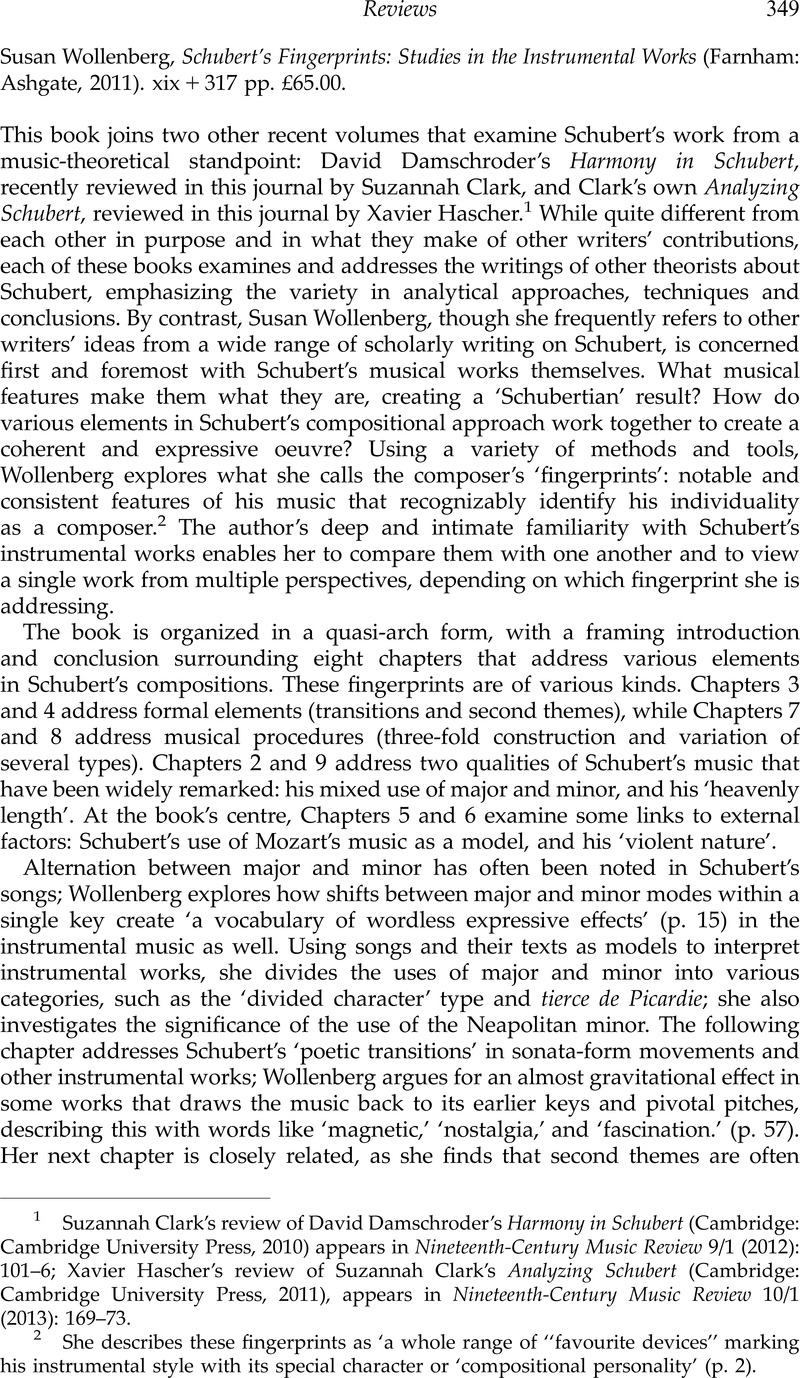No CrossRef data available.
Article contents
Susan Wollenberg, Schubert's Fingerprints: Studies in the Instrumental Works (Farnham: Ashgate, 2011). xix + 317 pp. £65.00.
Published online by Cambridge University Press: 06 January 2014
Abstract

- Type
- Book Reviews
- Information
- Copyright
- Copyright © Cambridge University Press 2013
References
1 David Damschroder's Harmony in Schubert (Cambridge: Cambridge University Press, 2010)Google Scholar
Suzannah Clark's Analyzing Schubert (Cambridge: Cambridge University Press, 2011)Google Scholar
2 She describes these fingerprints as ‘a whole range of “favourite devices” marking his instrumental style with its special character or ‘compositional personality’ (p. 2).
3 The index lists the following pages for D 956: ‘1, 8, 10–11, 13, 19, 30–31, 33–6, 41–2, 46, 47, 51, 57, 61–5, 73, 78, 80–82, 84, 91, 100, 103, 116, 136, 138–9, 155–8, 161, 165, 166, 168, 170–72, 173, 175, 180–81, 185, 240–43, 274–5’ (p. 311).
4 Wollenberg refers to Arthur Hutchings’ book Schubert (London: J. M. Dent, 1945) as an example of a work in which ‘[r]epeatedly Schubert is demoted to a lower level [than Beethoven]’ (p. 2). Suzannah Clark examines a related phenomenon: the tendency of some critics to link his music to his body type; Hutchings, for example, referred to some of Schubert's music as ‘flabby’; see Clark, pp. 39–52.




